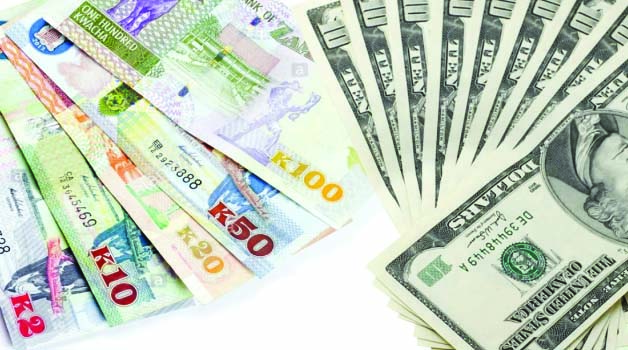By Cecilia Chiluba
Zambian Kwacha has been on a consistent upward trend in the last seven days, appreciating against the US dollar.
This is one of the strongest runs the country has seen in a while.
Historically, the US dollar-Kwacha rate reached an all time high of K29.10 in March of 2025.
As of Wednesday May 7, 2025, the local unit opened the market trading at K26.60 and K27, after closing the previous session at K27.60 and K27.07 on the bid and offer respectively.
An Investment Markets Analyst and Financial Advisor has attributed the rapid gains in the local unit to the weakening of the United States Dollar among other factors.
Munyumba Mutwale told Money News in an interview that on a year-to-date and monthly perspective, the global dollar has dropped 7.83 percent and 4.08 percent respectively.
Mr. Mutwale explained that this entails that if the Zambian Kwacha has only come down by 1.28 percent and the greenback in the global market dropping by 4.08 percent monthly, the weakness of the dollar is offsetting subtle weakness of the local unit.
“One factor that most of us are overlooking is the weakness of the US dollar. When you start to look at the dollar itself, you will see that on a year-to-date perspective and even on a monthly perspective, the global dollar has dropped 7.83 percent and from the monthly perspective it dropped 4.08 percent. That means the weakness of the dollar is offsetting subtle weakness of the Kwacha.”
“So this means that inadvertently the Kwacha is slightly weaker still but its just that the dollar is even more weaker. What’s happening is that the dollar is falling faster than the Kwacha is depreciating, therefore its circumventing it,” Mr. Mutwale noted.
He observed that the Kwacha is about 2.8 percent weaker year-to-date and the dollar weaker at 7.83 percent, but that the dollar has weakened much more than it is overshadowing the weakness of the Zambian currency.
“If the dollar had been stable, then we probably would have seen the Kwacha that is down 2.8 percent and a dollar at 7.83 percent year to date because on the global market, dollars have become cheaper to acquire, that is offsetting any domestic weakness,” he added.
Mr. Mutwale further said other factors that are contributing to the current positive Kwacha performance include the Central Bank’s injection of US dollars into the market, decline in global oil prices and reduction in power imports by ZESCO Limited.
“We have seen in actual facts, seven days of consistent appreciation in the Zambian Kwacha and this is outside of the regular tax payment season. So that is one of the positives we are starting to see right now. There might be some residual payments that come in just around this time to clear some of the tax bills but there are some things that we are starting to pick up in terms of the positivity of the foreign exchange (FX) rate that has been happening.”
“So the first thing that we can pick up is that usually there is an element of Central Bank intervention where the Bank is selling dollars into the market. But we have to really monitor to see if this goes beyond this period and doesn’t snub back, if it doesn’t then at least we are getting to some sort of stabilization,” Mr. Mutwale explained.
He also noted that offshore players or US investors who are looking to invest outside of America when it comes to fixed income instruments like bonds, are also contributing to the stability in the Zambian Kwacha.
He said the other element allowing more investors to come into the local market is the recent Moody’s rating of the positive outlook that was given to the country, which also drives into the factors that are driving the exchange rate.
“We have actually seen that due to their concerns about the 10-year Treasury being a safe haven, they are starting to look outwards and they are going into European markets and some of the developing markets. So for example, we have seen Germany’s interest rates coming down because of a lot of offshore interest as well.”
“So we have seen a lot of interest from other currency bonds at the moment, so this also triggers some of that money to flow into markets like Zambia because there is just a bit of push effect of dollars leaving the US market and going outside just out of trust for other things obviously the weakening of the dollar plays to that.”
“Other things that we have seen fundamentally that are affecting the FX rate are the oil prices that have come down and therefore even purchasing prices of imported oil are coming down, so less dollars are needed to purchase the oil that we need as a country,” he stated.
Mr. Mutwale highlighted that the reduction in purchasing prices of imported oil brings down the demand for dollars on the domestic market.
“ZESCO also announced recently that they are slowing down on power imports so that also takes another bit of the importing burden away.”
“Added to this, we have also seen that copper prices though they did drop of the US$9, 900 highs for the year that we saw, they have at least come back a little bit to about US$9, 300.”
“So when you compare copper and oil, you will see that year-to-date copper is still positive though it is down on a month, but year-to-date it is still up 7.19 percent, while oil has been down 19.28 percent. So you can see that these price changes are affecting the way things are operating in terms of the biggest supply and the biggest demand,” he said.




